Deva Pardue
Creative Director, Designer
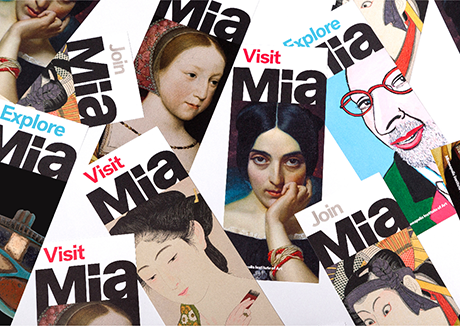
Identity design for the Minneapolis Institute of Art, an encyclopedic art museum.
Completed at Pentagram.
Primary design concentration:
Graphic Design
Most preferred tools for designing:
A good black pen and Moleskine notebook
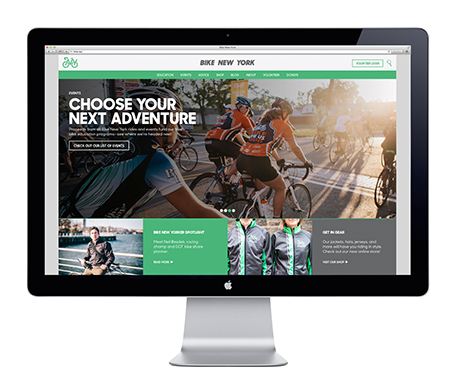
Identity and website design for Bike New York, a nonprofit dedicated to bike education
and initiatives in New York. Completed at Pentagram.
How and why did you choose to become a designer?
I’ve been around design my whole life, my Dad is a designer. He had a studio in Dublin, Ireland, in the 80’s and early 90’s, which he closed when my brother and I were kids in order to work from home and spend more time with us. He became a one man band then, but still had big clients like the DART and Bus Eireann, he had a home office that I’d sometimes sit and color and draw in after school while he worked. That said, I never really considered design as something I wanted to pursue—perhaps because of the familiarity. I first enrolled in College as a psychology major, I was 2 years in, before I realized that it wasn’t really what I wanted to do with my life. I enrolled in some studio fine art and design classes and really enjoyed them, so the following semester I decided to transfer to School of Visual Arts and move to New York.
What are some of the challenges you encounter as a designer and how do you deal with them?
Aside from the standard everyday things such as managing difficult clients or temporary stunts of creativity, another challenge I’ve encountered is being a part of the design community itself. I get turned off by some of the competition and ego that exists in New York, though I know it’s mostly born out of passion and love for design. In the past, my lack of interest in that aspect of the business has led me to question my dedication to the practice, but ultimately I know that I enjoy being a designer and I want to do good work, I just don’t want it to be self-serving.
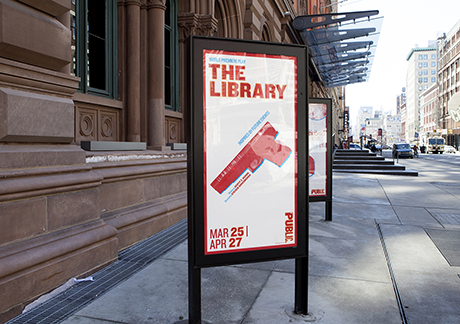
Poster for The Library, a play at the Public Theater directed by Steven Soderbergh.
Completed at Pentagram.
What is your definition of an “elegant solution,” that is, good design?
Using my last answer as a jumping off point, I think an elegant solution or good design is genuine and solves the problem at hand in as honest, surprising and memorable a way as possible. The best solutions have strong conceptual foundations which inform the visual design and establish an overall personality and a tone of voice. Additional decoration should only be added when it’s true to the concept and not just to satisfy the designer aesthetically.
From skills to values, what makes a designer successful?
As with anything, success is a matter of opinion, it means different things to different people. For me, it’s important to have interest and curiosity about things other than design. One of the best things about working as a designer are the endless opportunities to immerse yourself in different worlds. Every time you have a new client, you get a glimpse into a different business sector or niche practice, I think it’s important to enjoy and appreciate those learning experiences. Also, to recognize when a certain type of work or client doesn’t make you feel good, don’t do it anymore. We all have to do things we don’t want to every now and again but life’s too short to spend time and effort doing work you don’t believe in.
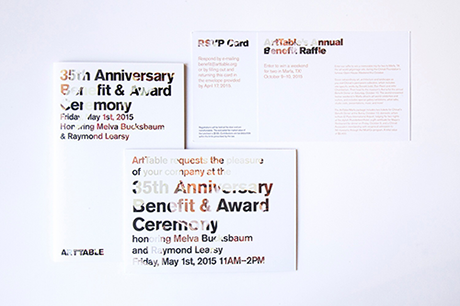
Benefit and Award Ceremony collateral for ArtTable, a New York-based nonprofit organization
for women in the visual arts.
How do you stay motivated and grow personally and professionally as a designer?
I try to remember that being a designer isn’t what defines me and it isn’t the only thing that makes me happy. I try to leave work on time so that I can do other things I enjoy in the evening and avoid becoming overworked or jaded. I’m a better designer and a better person that way.
I think you can form habits in your work over time that start to feel oppressive if you don’t shake things up. After 5 years of full-time work, I left on a three-month sabbatical earlier this month and am currently traveling around Eastern Europe for a few months. Stepping away from the computer and out of my comfort zone will do me a world of good, both personally and professionally.
For those aspiring to become a designer, whatever the discipline, what is your advice?
There are lots of things as, if not more, important than talent alone. Self-discipline, time management, and good people skills to name a few, but it also helps to have different educational backgrounds and hobbies whatever they might be. They will give you an edge by bringing unique perspectives to the design process and make you a more well-rounded individual.
What is your quest in design, from a professional practice, education or evolution standpoint?
I’m still figuring that out! And I don’t think that’s a bad thing. What I do know is I don’t want to pigeon-hole myself or do the same thing for too long. I really enjoy my photography too and have an interest in documentary film making that I’ve only begun to explore. Maybe they’ll always be side projects, maybe my focus will shift or I’ll be able to work on all equally. I try not to worry about it too much and just enjoy myself.
Previous: Carolina Scarpetta | Next: Rejane Dal Bello
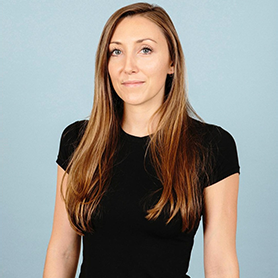
Support this solo initiative
What began as a collection of links has evolved into a comprehensive archive committed to creative culture—offering so far 395 interviews with under-the-radar Artists, Designers & Makers, in addition to 202 write-ups across events, books, movies, more. Free to explore. Free from ads. If you gain a level of motivation, knowledge, even delight, from Design Feast, please support on Patreon. Thanks for your consideration!
Wishing you continual success,
Nate Burgos, Content Creator & Publisher
Comments
There are no comments yet.
Leave Your Comment